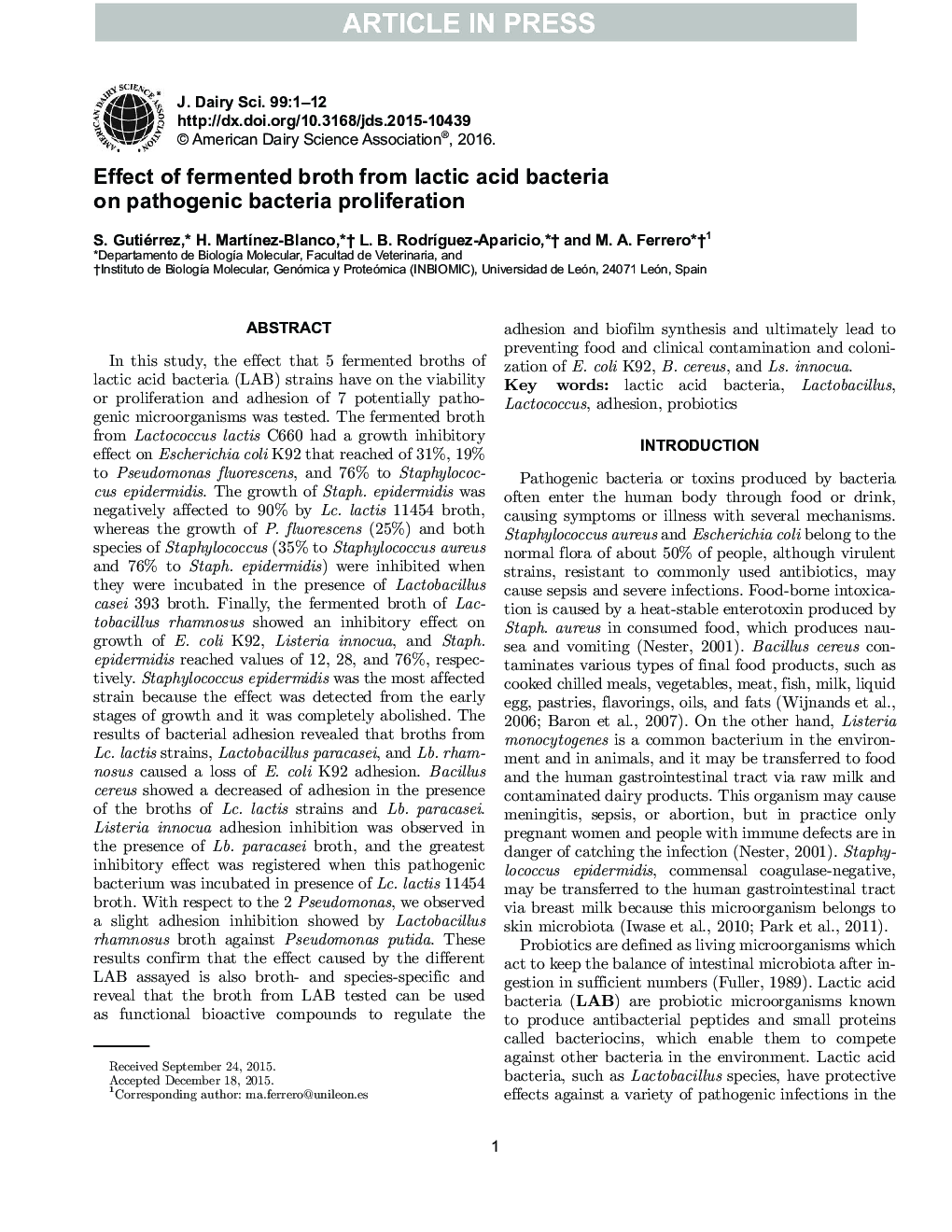| Article ID | Journal | Published Year | Pages | File Type |
|---|---|---|---|---|
| 10973064 | Journal of Dairy Science | 2016 | 12 Pages |
Abstract
In this study, the effect that 5 fermented broths of lactic acid bacteria (LAB) strains have on the viability or proliferation and adhesion of 7 potentially pathogenic microorganisms was tested. The fermented broth from Lactococcus lactis C660 had a growth inhibitory effect on Escherichia coli K92 that reached of 31%, 19% to Pseudomonas fluorescens, and 76% to Staphylococcus epidermidis. The growth of Staph. epidermidis was negatively affected to 90% by Lc. lactis 11454 broth, whereas the growth of P. fluorescens (25%) and both species of Staphylococcus (35% to Staphylococcus aureus and 76% to Staph. epidermidis) were inhibited when they were incubated in the presence of Lactobacillus casei 393 broth. Finally, the fermented broth of Lactobacillus rhamnosus showed an inhibitory effect on growth of E. coli K92, Listeria innocua, and Staph. epidermidis reached values of 12, 28, and 76%, respectively. Staphylococcus epidermidis was the most affected strain because the effect was detected from the early stages of growth and it was completely abolished. The results of bacterial adhesion revealed that broths from Lc. lactis strains, Lactobacillus paracasei, and Lb. rhamnosus caused a loss of E. coli K92 adhesion. Bacillus cereus showed a decreased of adhesion in the presence of the broths of Lc. lactis strains and Lb. paracasei. Listeria innocua adhesion inhibition was observed in the presence of Lb. paracasei broth, and the greatest inhibitory effect was registered when this pathogenic bacterium was incubated in presence of Lc. lactis 11454 broth. With respect to the 2 Pseudomonas, we observed a slight adhesion inhibition showed by Lactobacillus rhamnosus broth against Pseudomonas putida. These results confirm that the effect caused by the different LAB assayed is also broth- and species-specific and reveal that the broth from LAB tested can be used as functional bioactive compounds to regulate the adhesion and biofilm synthesis and ultimately lead to preventing food and clinical contamination and colonization of E. coli K92, B. cereus, and Ls. innocua.
Related Topics
Life Sciences
Agricultural and Biological Sciences
Animal Science and Zoology
Authors
S. Gutiérrez, H. MartÃnez-Blanco, L.B. RodrÃguez-Aparicio, M.A. Ferrero,
